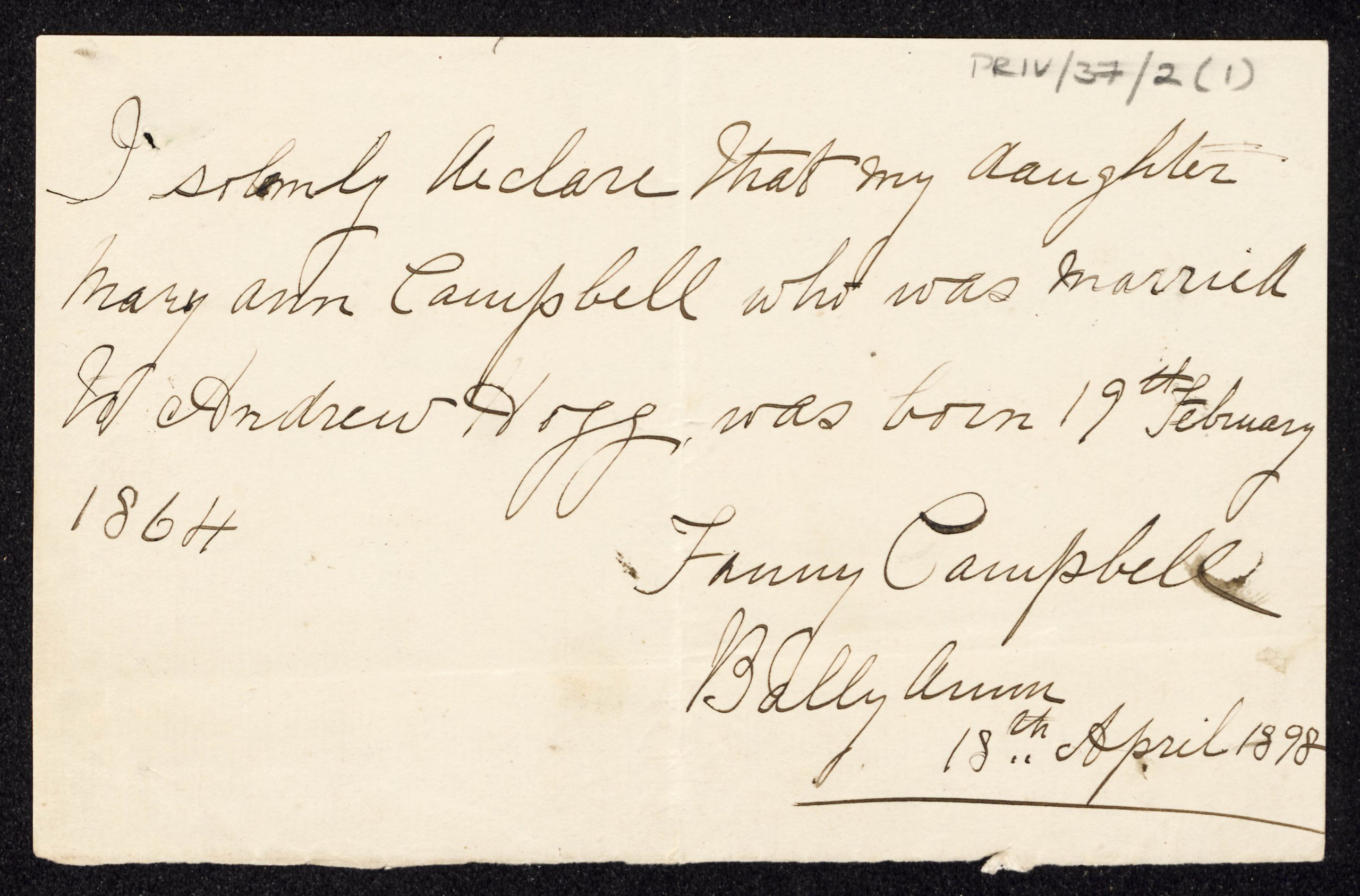February Document of the Month
Charlton’s Endowment Charitable Trust Fund (NAI, PRIV37) was set up by Thomas Charlton (1702-1792) of Curraghtown, County Meath in the late 18th century. Tying in with this month’s theme of St. Valentine’s Day, Charlton directed in his will dated 28th August 1792, that the fund be used to give young couples a gratuity upon marriage, to set them up in their new life together. Among the documentation at the National Archives are these applications for so-called marriage portions and grants for advancement in life for the period 1800-1937.
The fund stipulated that the groom should be older than 18 and younger than 30 and be employed as a day labourer and reside in county Meath or Longford. The bride-to-be also had to be older than 18 but younger than 40 and the daughter of a day labourer in the same counties. Both had to marry with the consent of their parents in a marriage solemnized in the presence of the Minister and Churchwarden of the parish in which the bride was resident and a marriage certificate produced.
Initially the fund was to be dispensed to members of the Church of Ireland only with a Protestant Committee being established in county Meath and Longford, but later the scheme was extended to include Catholic couples in county Meath where a Catholic Committee was established. It was broadened to include surrounding counties of Cavan, Louth, Offaly, Westmeath and Dublin City if suitable candidates were not found in counties Meath and Longford. The amount of money received varied. In one of the examples below the sum of £4, 15 shillings 3 1/2 pence was awarded to Thomas Snell and Lovey Lord following their marriage which, for the time was a generous sum.
There is an interesting theory that the reason Charlton set up this fund is because he did not want to leave his inheritance to his family. As the story goes, Charlton was intending to marry late in life at age 75 and his sisters, alarmed at the thought of not inheriting his vast fortune, decided to do something about it. The night before the wedding they ensured that it would not be physically possible for him to father children and so prevented the marriage from taking place. Charlton willed his rental income from the Curraghtown Estate and from his property in Edgeworthstown to be invested and put into the creation of this fund, thereby exacting his revenge.
The National Archives has the marriage certificates available to consult which include the names of the bride and groom, their fathers, where they were from, as well as the date and venue of their marriage. Some of these certificates include letters supporting the good character of the parties involved, from parents and other close associates. As a result, this collection of records are a significant genealogical resource especially for the counties mentioned and in particular for Church of Ireland members.
There is a hard copy finding aid only to the earlier part of these records which are listed by county and then in alphabetical order by the surname of the groom. This list is available in the National Archives Reading Room although there are plans that it will be made available via our website in due course, work is currently being undertaken on the County Meath files and may impact accessibility. There are associated documents in a different collection which are also available to consult consisting of receipts to the Agent of Charlton’s Charity from the years 1826, 1827 and 1844 (ref: NAI, M1513-M1514 a-d). Also, notices of distribution of the Charlton fund for provision of marriage portions. Co. Meath, 1855-1863 (7 notices) and Co. Longford 1856 (1 notice), with copy chancery decree in Chancery case, Attorney General v Charlton Trustees, 1835, as well as a certificate for Pat Farrelly and Ellen White, Co. Longford of 29 July 1839 (ref: NAI, M2800).








